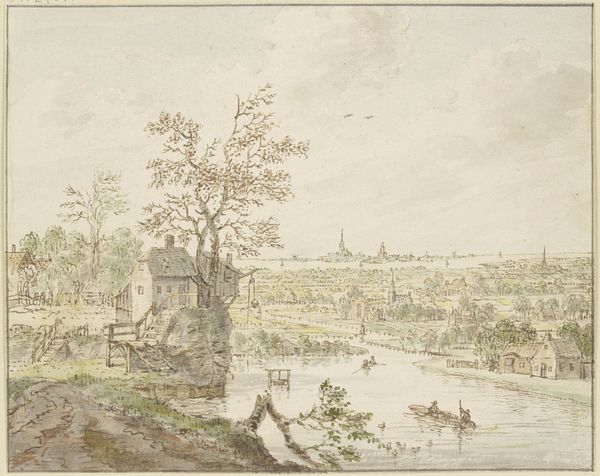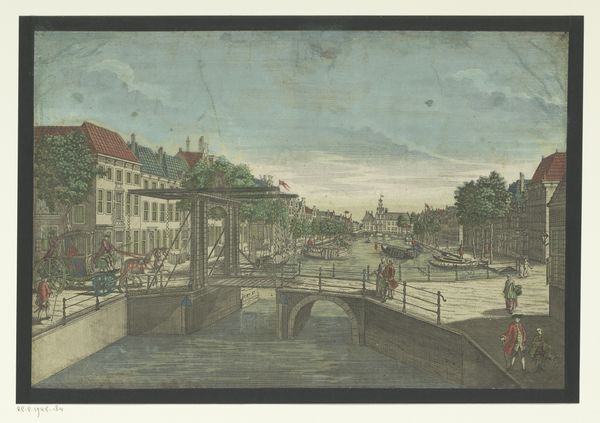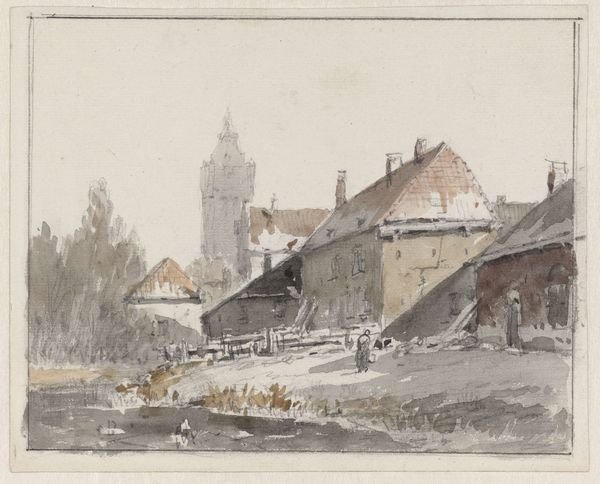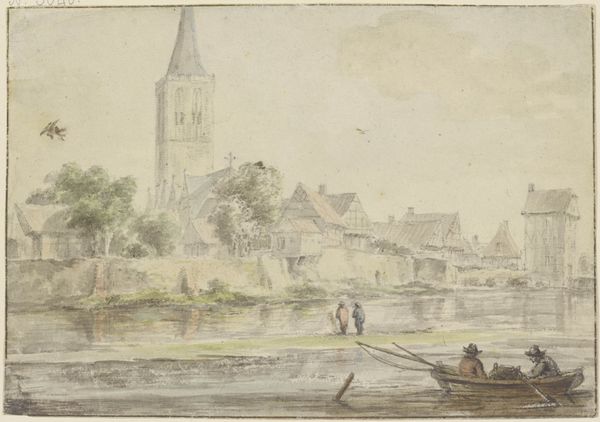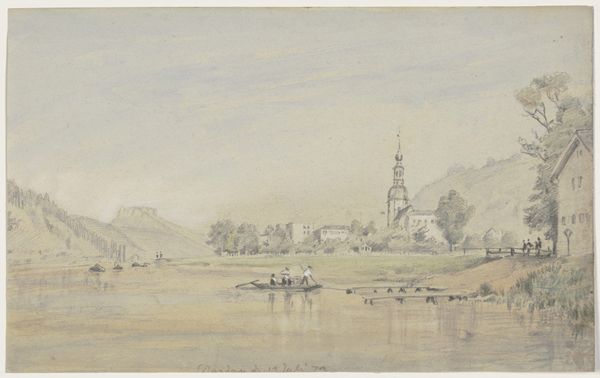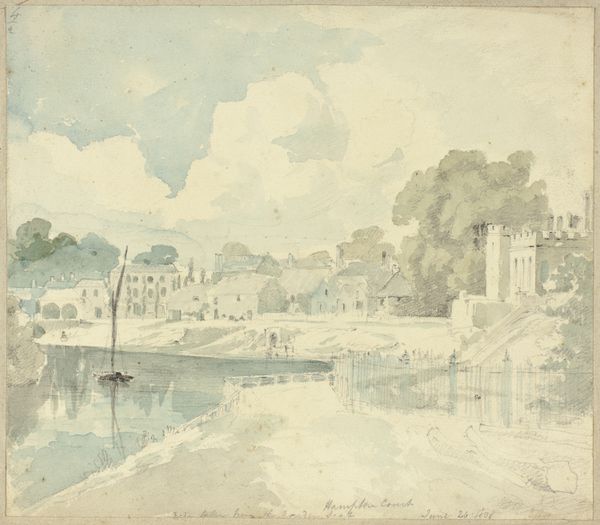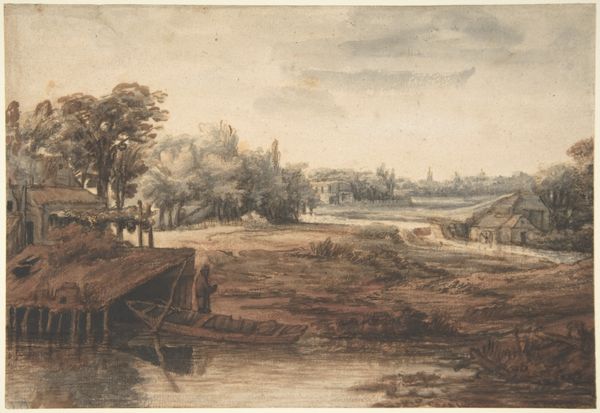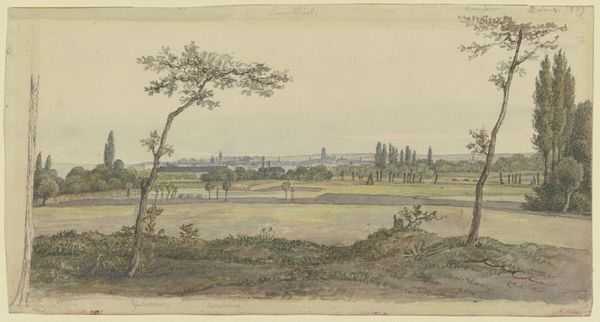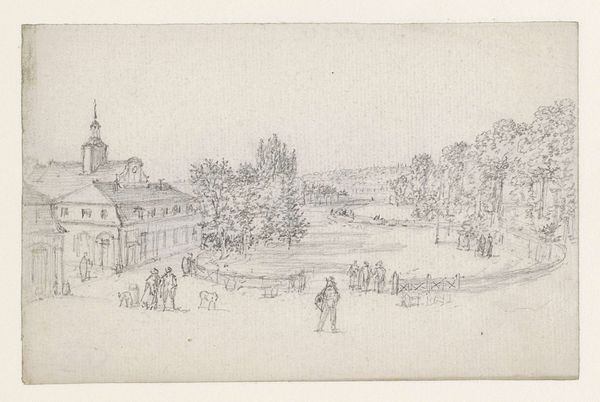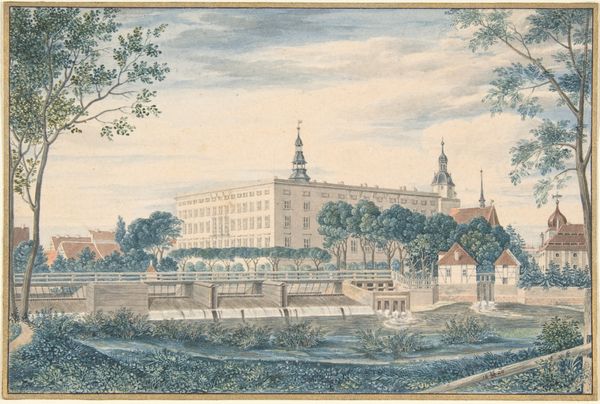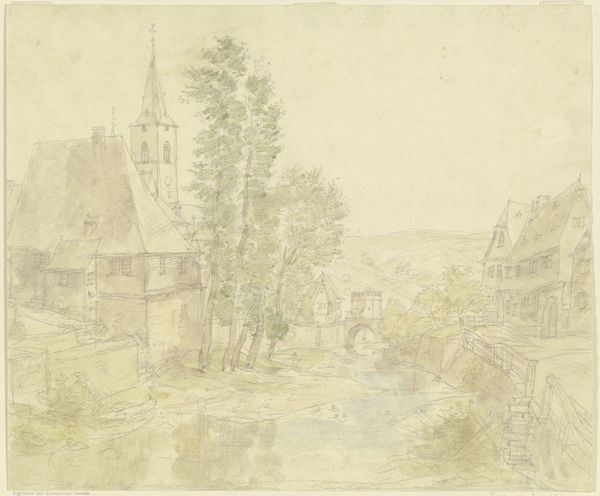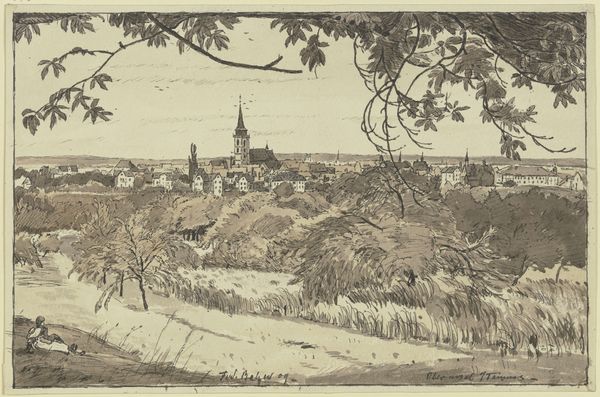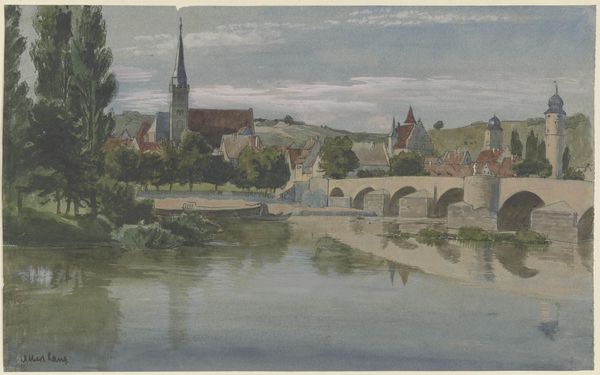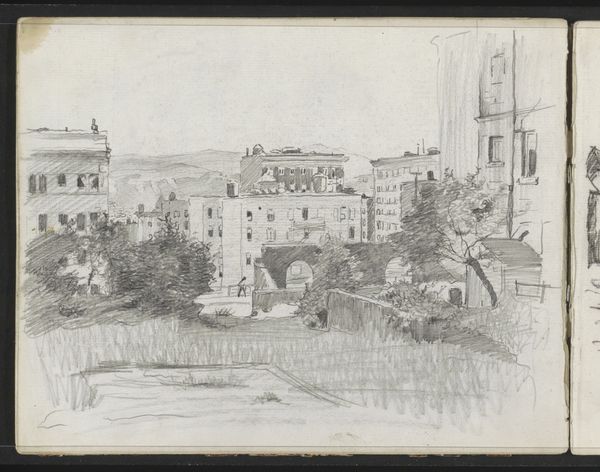
drawing, painting, watercolor, architecture
#
drawing
#
painting
#
landscape
#
watercolor
#
coloured pencil
#
romanticism
#
cityscape
#
architecture
Copyright: Public Domain
Editor: So, this is "Metzler House in Bonames near Frankfurt" by Carl Morgenstern, a watercolor and pencil drawing. There's something serene and dreamlike about it, but I'm curious – what jumps out at you when you look at it? Curator: Well, let's consider the materials themselves. Watercolour, pencil… these are relatively accessible materials. What does it say about the artist's social standing or the intended audience, that they weren't using, say, oils and canvas? Who was this work made *for*, and under what conditions? Were they selling sketches to middle class Frankfurt tourists on their way to a resort destination or were these simply personal sketches? Editor: That’s a good point. I hadn’t thought about the social implications of the medium itself. So, the choice of watercolor speaks to accessibility and maybe a different type of patronage? Curator: Precisely. And look at the architecture depicted. It's a blend of vernacular and elevated design; how does that relate to the emerging bourgeoisie of Frankfurt, who were appropriating aristocratic aesthetics, adopting certain markers of class through the labour required to erect and occupy spaces such as these? Does this perspective seem aspirational or even subversive in any way, considering how the means and consumption of these material goods reflect society at large? Editor: It's interesting to think about the buildings themselves as products of labor and social aspiration, and how the medium of watercolor reflects that. Is there a critique implied? Curator: Perhaps. The ease of production afforded by the medium challenges a strict dichotomy between art and craft, doesn't it? The material reality reframes traditional art historical narratives. The romanticism blends the elite ideals of home ownership for relaxation or respite with the quickly accessible materiality that permits such a view to even be enjoyed and sketched in the first place. Editor: I never considered it that way. I was initially drawn to the scene itself, the calm mood. Curator: Which is what Morgenstern intended as a visual effect, the goal being relaxation, yes, but the product is both visual pleasure as well as an easily reproducible souvenir for the modern traveller! The ease by which they acquire it, however, might speak to larger structures of class in nineteenth century Germany. Editor: So, by examining the materials and social context, we can see this artwork as more than just a pretty picture; it's a window into the socio-economic dynamics of its time. I learned a lot! Curator: Precisely! I think by engaging with such an art work via a social and material focus really illuminates some of the larger frameworks of society, class and material in general, and how intertwined each really are.
Comments
No comments
Be the first to comment and join the conversation on the ultimate creative platform.
